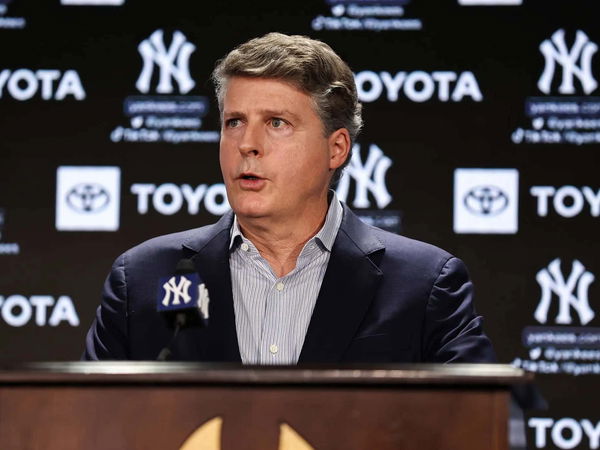

For years, Yankees owner Hal Steinbrenner has wrestled with a big question: does throwing money at a roster guarantee a championship? Last year, he raised eyebrows by calling the team’s payroll “unsustainable,” sparking debates about whether the Yankees were about to tighten their wallets. Fast forward a few months, and now he’s singing a different tune. The Yankees aren’t necessarily trying to stay under the $310 million luxury tax—they’re just questioning whether a sky-high payroll is really the secret to winning it all.
Even though the Yankees have one of the highest payrolls in baseball—second only to the Dodgers—they are now prioritizing efficiency and developing homegrown talent. This season has seen signings such as Jose Siri and Nick Madrigal by the team. But they’ve also been careful about long-term commitments. Trade rumors surrounding Marcus Stroman suggest a more measured approach, signaling that the front office values flexibility over simply spending their way out of problems.
ADVERTISEMENT
Article continues below this ad
The future of Yankees’ finances: smart investments or cost-cutting?
“The threshold is not the concern to me,” Steinbrenner said recently in an interview posted by Yankees on X. “Should I really need a $300-plus million payroll to win a championship? Does having a huge payroll really increase my chances that much? I’m not sure there’s a strong correlation there.”
Hal Steinbrenner was asked if the Yankees are trying to get under the $310 million luxury tax threshold:
"I would say no. The threshold is not the concern to me. The concern to me is, I've said this till I'm blue in the face. I had to change my numbers because times have changed… pic.twitter.com/BqfDfdp92D
— Yankees Videos (@snyyankees) February 21, 2025
His point isn’t without merit. The Yankees have certainly spent aggressively in recent years, yet their last World Series title dates back to 2009. Meanwhile, teams with budgets such as the 2023 Arizona Diamondbacks have managed to advance far into the postseason. While Steinbrenner acknowledges the significance of investment in sports team success, he also implies that strategic team building and nurturing player talent could be equally, if not more, crucial than relying on financial resources for solutions.
Moreover, the Yankees have put a lot of resources into developing players. They’re relying on talent such as Anthony Volpe, Austin Wells, and Luis Gil to make an impact alongside their expensive stars. The era of simply splurging money on free agents might be coming to an end, but that doesn’t suggest the Yankees are moving away from their image as big spenders.
This offseason’s moves show that the Yankees are evolving. They’re still willing to make aggressive additions, but they’re also keeping an eye on long-term flexibility. Steinbrenner’s message is clear: the team isn’t just looking to be the highest bidder—they want to be the smartest one. The real test will be proving that this refined spending strategy can bring a championship back to the Bronx.
ADVERTISEMENT
Article continues below this ad
What’s your perspective on:
Is Hal Steinbrenner right to question if a $300M payroll truly guarantees a World Series win?
Have an interesting take?
Lessons from the past: avoiding another payroll disaster
The Yankees have come to realize that splurging on player contracts doesn’t always lead to success, in the run when those contracts start showing their age and become a burden of an asset. Giancarlo Stanton’s hefty extension and Josh Donaldson’s expensive acquisition have become tales for the team. Stanton, once a top-tier player, has been plagued by injuries. Leading to a decline in performance that made his $325 million contract more of a liability. With Donaldson’s $50 million deal. The Yankees had to let him go after he failed to meet expectations on the field. Meanwhile, Aaron Hicks’ extended contract further restricted their roster flexibility, reinforcing the need to avoid long-term financial handcuffs.
To prevent future financial missteps, teams need to focus on being flexible with their finances, analyzing performance effectively, and using contract terms that reduce risks. Effective approaches include front-loading contracts with payments at the beginning to limit long-term obligations, incentives based on performance, and steering clear of paying much for older players. Moreover, the Yankees can retain flexibility by using opt-out clauses and mutual agreement options. The Yankees’ past experiences and those of teams such as the Angels with Albert Pujols and the Red Sox with Pablo Sandoval offer a lesson.
ADVERTISEMENT
Article continues below this ad
While they remain one of the league’s highest spenders, Hal Steinbrenner’s approach signals a shift toward smarter investments rather than reckless spending. How they manage their payroll and roster flexibility will ultimately determine if this strategy translates into a championship.
ADVERTISEMENT
ADVERTISEMENT
ADVERTISEMENT
ADVERTISEMENT


Is Hal Steinbrenner right to question if a $300M payroll truly guarantees a World Series win?